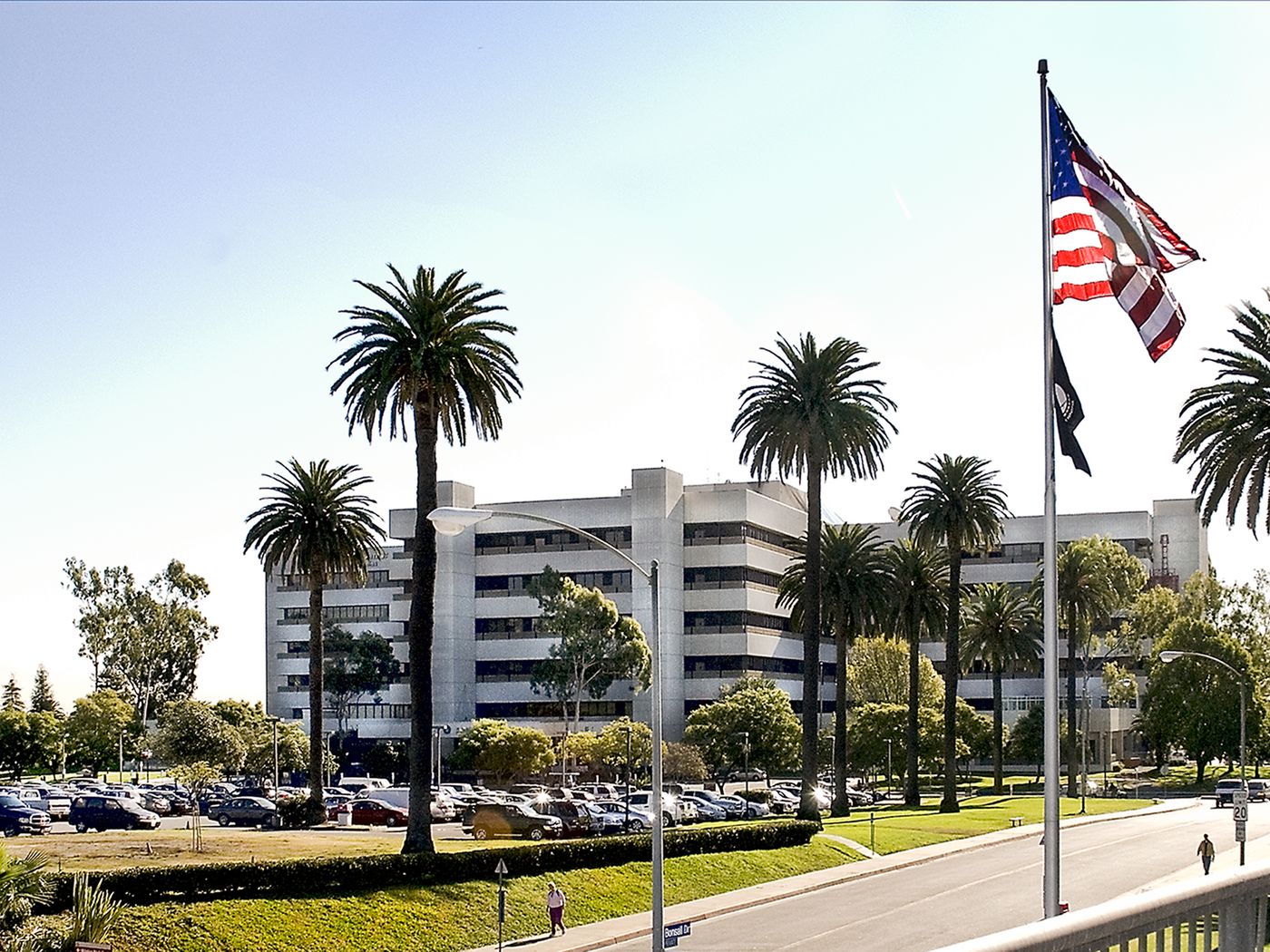

After years of legal fights and hearings, a major trial over what should be done with a massive plot of land owned by the Department of Veterans Affairs in Los Angeles started today. The case, heard in a non-jury trial by a federal judge, could decide if thousands of housing units are built for veterans on the land.
The case, brought by Los Angeles-area veterans experiencing homelessness, covers a number of disputes over the use of the West Los Angeles Veterans Affairs campus. The key matters is how much housing should be built on the land. Lawyers for the veterans wrote in a brief last month that they want to see a total of 4,000 supportive housing units built on the 388-acre land, as well as 1,000 temporary shelter beds. The federal government meanwhile argues that it is building plenty of housing and that the demands in the lawsuit place an undue burden on the VA.
In May, the federal judge overseeing the case, Judge David Carter, ruled in a partial summary judgement that the VA is discriminating against veterans earning certain amounts of disability compensation. Essentially, the disability payments many of these veterans were receiving put their income above the income threshold of what the VA said would qualify for the planned housing for the campus.
Since being filed, the lawsuit has expanded into a class action case. The trial is expected to run through August.
Currently the VA has a master plan to build 1,215 new housing units per terms from a 2015 settlement from the previous lawsuit. So far only 233 are open.
At the root of the lawsuit is a debate over what the 388-acre campus should be used for. The land was gifted to the federal government in 1888 for the purpose of providing homes to U.S. military veterans. At the time, that mainly meant veterans of the American Civil War. For decades the site did offer housing. During the 20th century and particularly after World War II the large section of West Los Angeles shifted to become more of a medical installation, which it still is today.
Judge Carter previously ruled that the VA’s leasing of parts of the land for the purpose of parkings lots and sports facilities, among other uses, violates the terms of the original 1888 deed that gifted the land to the federal government for the purpose of servicing veterans. His two earlier rulings did not outright address what if any additional housing should be built.
Los Angeles County is home to 75,312 unhoused people, according to the 2024 point-in-time homeless count conducted in January. Of those, 3,410 are veterans and 2,251 are unsheltered. The Department of Housing and Urban Development’s 2023 point-in-time count (this year’s results have not yet been released) found that there were 35,574 unhoused veterans on the street in one night in January 2023.
Subscribe to Task & Purpose Today. Get the latest military news and culture in your inbox daily.
The federal government is arguing that being required to build more housing would add extra costs and time, due to environmental impact reports, finding new developers and doing additional infrastructure improvements to the campus beyond what it already has done. Additionally, the VA argues that actions such as leasing the land generates revenue that goes toward veteran services.
For some time there was a large encampment just outside the West LA VA campus. Dubbed “Veterans Row,” the area was cleared in 2021. Many of the veterans ended up in “tiny home” shelters placed inside the campus; advocates and many officials note that these shelters do not count as permanent housing. Those homes have also been damaged in floods of mud from storms as well as fires. Advocates say expanded, permanent housing is needed on the VA land.
Dozens of supportive housing projects have opened or are in construction in the City of Los Angeles thanks to funding approved by voters in a 2016 ballot proposition. Those are meant to help house the overall population of unhoused Angelenos. However the amount of housing funded by Proposition HHH is so far not enough to meet the 2016 homeless count, let alone keep up with the growth of the number of people experiencing homelessness in the region.
Judge Carter is overseeing another major lawsuit over homelessness filed against the City and County of Los Angeles.
The latest on Task & Purpose
- Top U.S. special ops units held a major exercise off Alaska, 45 miles from Russia
- An Army officer is one of the stars of the U.S. women’s Olympic rugby team
- Army marksmanship instructor wins Olympic medal in rifle event
- Inside the recovery of MIA Americans from a secret jungle base
- Pentagon orders review of Medals of Honor given for Wounded Knee Massacre
